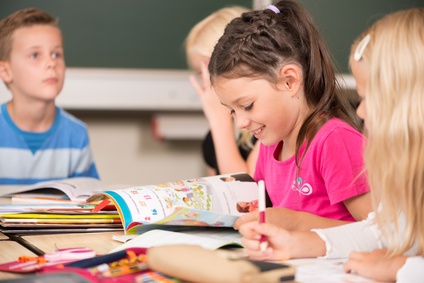Bilingualism in education: a long-term acquisition
The vast majority of bilingual children learn their languages naturally; they grow up in an environment where two or more languages are required. Bilingualism therefore develops without any real linguistic planning by their family or acquaintances. What’s interesting is how bilingualism in education has a significant influence on children’s brains. Read more to understand how bilingualism can sculpt the mind and what solutions are offered to monolingual parents to help their children become bilingual.
How bilingualism shapes the mind
The effect of bilingualism on one’s brain is a very popular topic in the media. You might have questions such as: ‘How is a bilingual brain different from a monolingual brain?’, ‘Does the brain really change when exposed to different languages?’, ‘How does your brain accommodate new languages?’. Recent studies suggest that the brain’s neuroplasticity (its ability to change and adapt) is influenced by bilingualism.
Studies are carried out through functional magnetic resonance imaging (fMRI), which is based on variations in blood flow, and electrical analysis of the brain. In Karl Kim’s ‘Distinct cortical areas associated with native and second languages’, a comparison between two bilinguals was studied. One obtained both languages in early childhood and the other learnt their second language in adulthood. Both languages of the early bilingual activated the same regions of the Broca area of the brain, whereas the late bilingual activated their languages in different but neighboring regions. These results suggest that age is a primary factor in how the brain organises language, particularly in the Broca area, which orchestrates the complex muscle movement necessary for spoken word.
Further research argues that when the languages are very different, the activated areas of the brain are also different. However, Arturo Hernandez and Ping Li focus not on language disparity but on proficiency. They argue that a higher proficiency in bilingualism activates the same brain areas regardless of the language. On the contrary, those who are less proficient in their second language activate different zones, more so in understanding rather than production.
Although these studies dispute, a fundamental discovery is that both languages, no matter how similar, are activated and are constantly available. To stop both languages interfering with each other, executive control activities such as inhibition, selective attention, and rapid change must be carried out, and this is done by a network of structures that involve the prefrontal cortex. This network is set up very early for simultaneous bilinguals.
It is therefore no doubt that bilingualism has a significant impact on the brain, the question is how this effects our behaviour. A recent work by Ellen Bialystok testifies the advantages of bilingualism. She describes that children from age 5 to 9 who speak more than one language prove better in metalinguistic tasks than that of one language; tasks such as deciding whether something is grammatically correct, despite the fact that the sentence is lacking in meaning.
Bilingualism also helps to counteract the slow decline of grey matter, the part of the brain that has a crucial role in allowing normal functionality day to day. A diminution of grey matter can eventually lead to Alzheimer’s disease.
To conclude, the study of neuroplasticity as a function of bilingualism provides a glimpse onto the adaptable nature of the human brain, as well as commending language learning in earlier years; therefore, promoting bilingualism in education.
Childcare in foreign languages to promote cognitive flexibility
Frequent learning in a fun, bilingual environment with a familiar person is THE best way to be immersed in a foreign language. Parents get childcare for their children but also get the opportunity to introduce them to a new language. This concept gives children a certain immersion in foreign languages while staying within child’s normal surroundings.
As we say time and time again, the best way to learn a new language is to start young. Between the age of two and seven, children go through a critical learning phase for language development. Before the age of seven, children are very responsive and try to communicate.
The less the child realises they are learning a new language, the better! Thanks to the bilingual nanny, they are directly in contact with a native speaker who is able to teach them the language in an interactive and fun way; either with games or by simply by using everyday terms. It is through this interaction and attachment between child and nanny that a line of communication is opened up and that linguistic barriers are surpassed.
Moreover, learning a new language stimulates children’s’ cognitive growth, especially in terms of their general intellect and their ability to read, as underlined by the Journal of Neuroscience’s 2015 studies.
Educational tools to aid language learning
Educational activities in language learning are vital tools for engaging children: arts and crafts, games, singing and reading… All these methods help to introduce children to a language; at the same time are enjoyable and correspond to children’s abilities. Playing games helps children to associate ‘saying’ with ‘doing’ and thus makes them an active participant in their learning. This can also be done through storytelling, to familiarise children with pronunciation of words or even through arts and crafts to help them understand the meaning of new vocabulary. Bilingualism therefore develops in a rich and varied environment which must be affective and continued. It is clear that, in a society that is becoming more and more globalised, fluency in another language is not only a useful tool, but also an absolute necessity in order to help the younger generations to gain access to communication and careers worldwide.







